
Examples of invertebrates include insects (e.g., ants, bees, beetles, butterflies); crustaceans (e.g., crabs, lobsters, barnacles); arachnids (e.g., spiders, scorpions); mollusks (e.g., clams, snails, octopuses, squid); echinoderms (e.g., sea urchins, sea stars) and cnidarians (corals, jellyfish).
On this page you’ll find information on these and other invertebrates, with pictures and interesting facts on each…
Scroll down to browse all of the invertebrates, or use the index below to go to a specific animal…
Invertebrates Examples
Arthropods
Insects
Crustaceans
Arachnids
Myriapods
Mollusks
Echinoderms
Cnidaria
Annelids
Examples Of Other Invertebrates
What Is An Invertebrate?
An invertebrate is an animal without a vertebral column, or backbone. At least 95% of all known animal species are invertebrates.
Whereas the term “vertebrate” applies to a specific group of animals (members of the subphylum Vertebrata) the term “invertebrate” is less strict, and simply applies to any animal that lacks a backbone. This means that a vertebrate may belong to one of several different phyla.
A phylum – plural phyla – is a group of related animals. You can find out more about this and other types of animal groups, including class, order and family, on this page: Animal Classification
All vertebrates, from fish to mammals, are related by a distant, shared ancestor. Because invertebrates belong to many different (and not necessarily related) groups, some invertebrates are more closely-related to vertebrates than they are to other invertebrates.
In the list below, we have included examples of invertebrates from each of the major groups, including arthropods (insects, arachnids, etc.), mollusks (bivalves, octopuses, etc.) and many others.
List Of Invertebrates
Arthropods

An arthropod is a member of the phylum Arthropoda. Arthropoda is not just the largest group of invertebrates, it’s also the largest single group of animals in the animal kingdom. Over 80% of all animal species are arthropods.
Arthropods are invertebrates with segmented bodies, jointed limbs, and an exoskeleton (a hard outer covering that protects and supports the inner parts of an animal’s body).
You can see more examples of arthropods on this page: Arthropods Examples
Below are examples of invertebrates from the major arthropod groups.
Insects
Arthropods make up the largest group of invertebrates… and insects make up the largest group of arthropods. Around half of all known animal species are insects! All insects have six legs, and bodies that are divided into three main sections: head, thorax and abdomen.
Ant
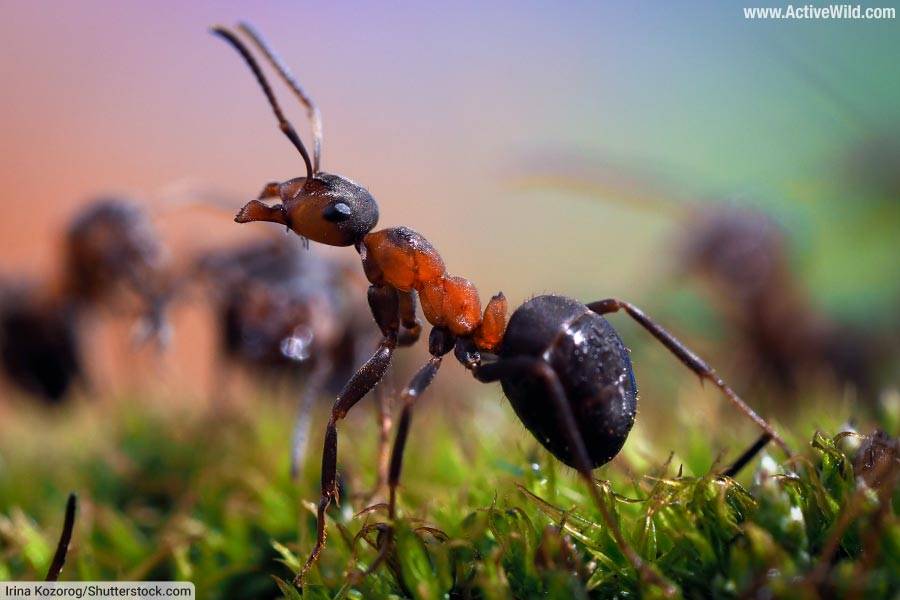
Ants are insects belonging to the family Formicidae. Ants live in large colonies (some ant colonies can consist of over one million individual ants).
Most of the ants in a colony are workers: wingless, infertile females, who perform tasks such as gathering food and protecting the nest from predators. Winged males known as drones mate with fertile females known as queens, who found new colonies.
Bee
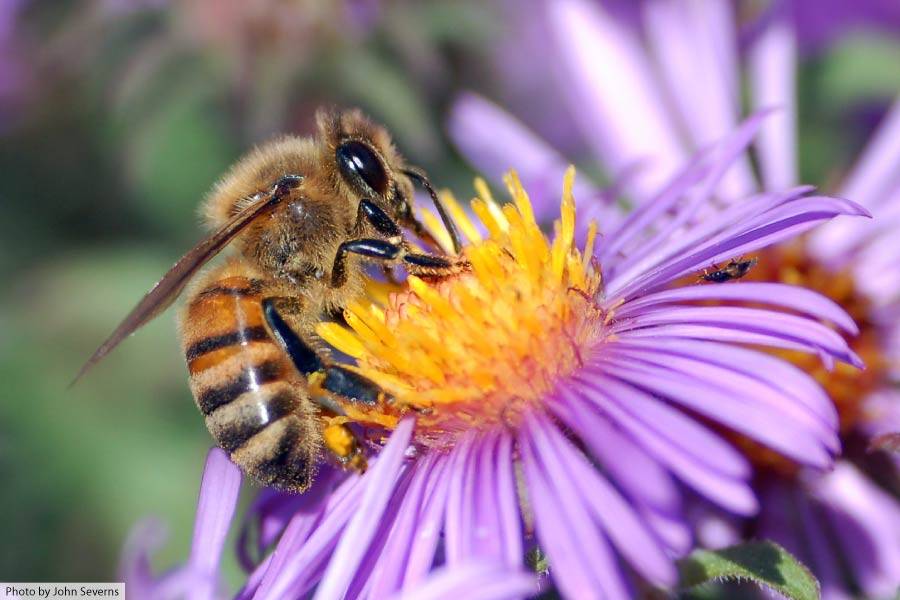
Bees are winged insects that are related to ants and wasps. Many bees live, like ants, in colonies founded by a queen and consisting mainly of infertile female workers. The majority of bee species are solitary.
Different types of bees include: honey bees, bumblebees, stingless bees and carpenter bees.
Beetle
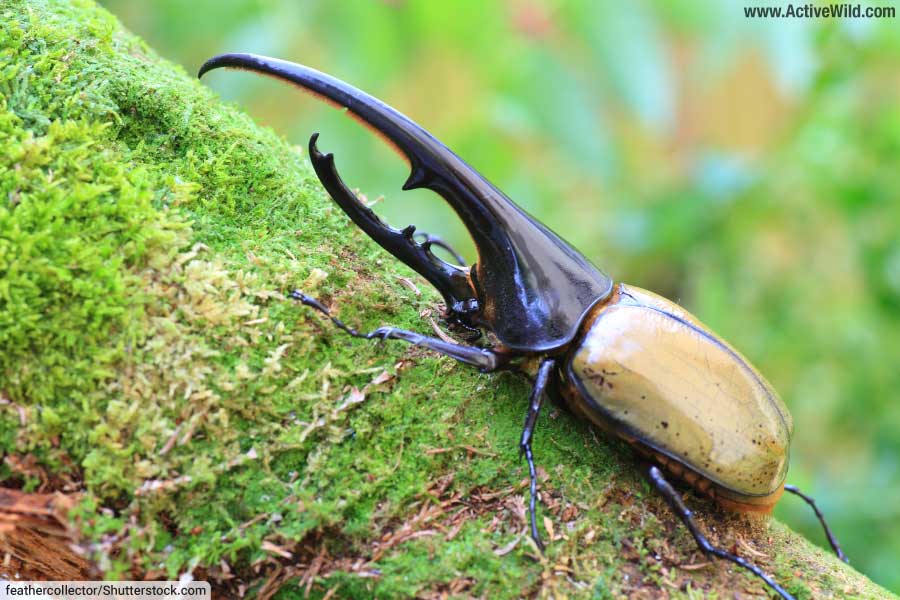
Arthropods make up the largest group of invertebrates… insects make up the largest group of arthropods… and beetles make up the largest group of insects!
Around 40% of all insect species are beetles, and 25% of all animals are beetles.
Beetles make up the order Coleoptera. The forewings of a beetle have evolved into protective cases known as elytra.
You can find out more about beetles on this page: Beetles – The Ultimate Guide
Butterfly
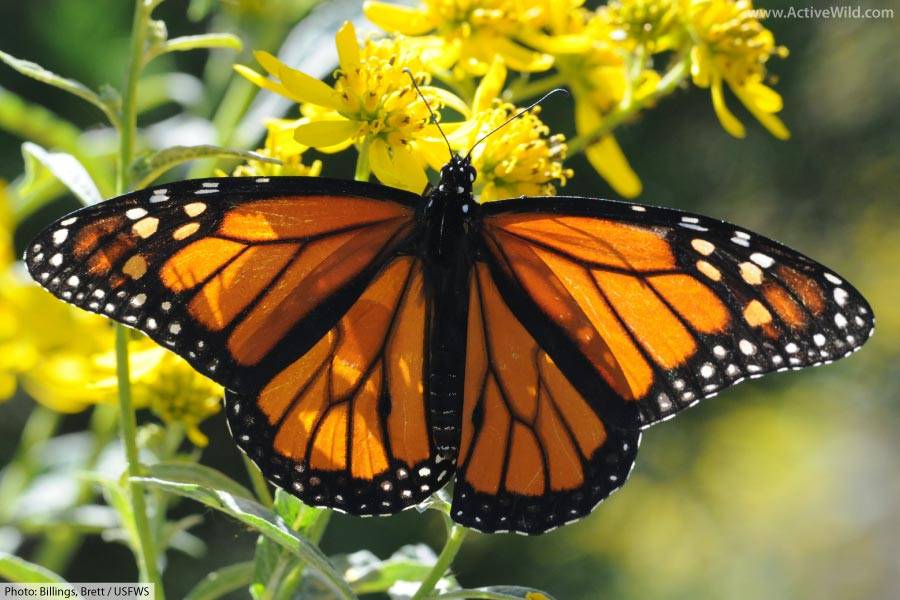
Butterflies belong to the insect order Lepidoptera, which also includes moths. Butterflies have four large, scale-covered and often brightly-colored wings, and tube-like mouthparts for sucking. A butterfly larva is known as a “caterpillar”.
Want to know the difference between butterflies and moths? Find out on this page: Butterfly Vs Moth
Crustaceans
Whereas the majority of insects are found in terrestrial (land) or freshwater habitats, most (but not all) crustaceans are found in the sea.
Crustaceans are invertebrate animals with a hard exoskeleton, two pairs of antennae, and a pair of compound eyes (which are often mounted on stalks).
You can find out more about crustaceans on this page: Crustaceans – The Ultimate Guide
Crab
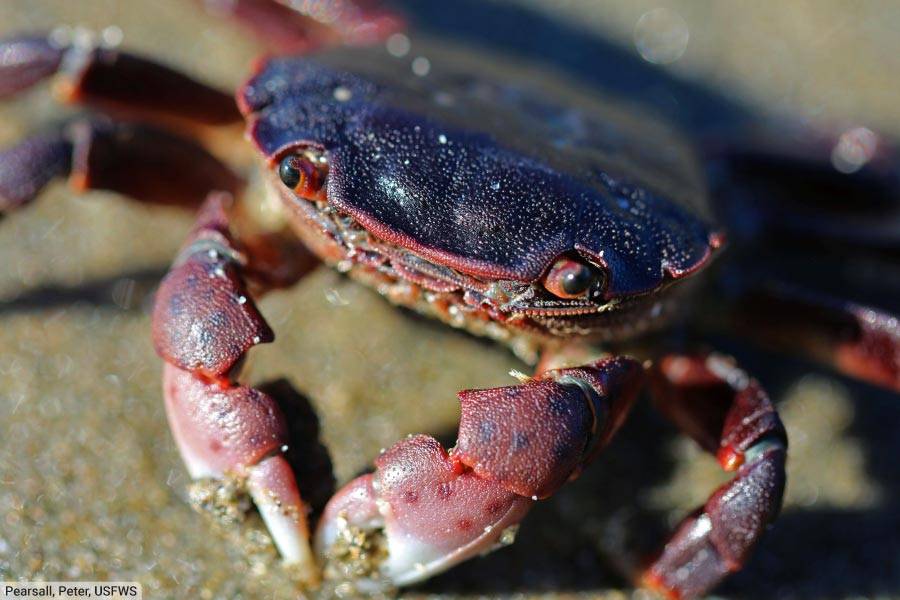
A crab is a member of the crustacean order Decapoda. Other decapods include lobsters, crayfish and shrimp.
The word “decapod” means ten-footed, and refers to the ten main legs of a decapod (decapods often have numerous other, leg-like appendages). The forelegs of a crab have evolved into pincers.
The horseshoe crab, despite its name, is neither a crab, nor a crustacean. In fact, it is more closely related to arachnids.
Barnacle

After a brief free-swimming larval stage, a barnacle attaches itself to a suitable surface (often the body of another animal) and becomes sessile (rooted to the same spot).
Arachnids
An arachnid is a member of the arthropod class Arachnida. Adult arachnids have eight legs, with many arachnids having additional appendages such as claws or feelers that resemble legs.
You can find out more about arachnids on this page: Arachnids – The Ultimate Guide
Spider
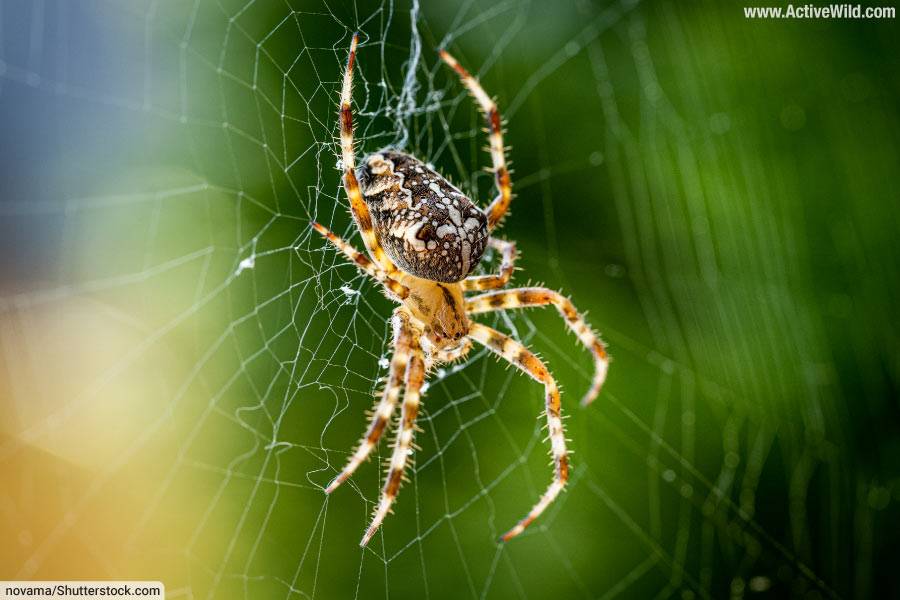
Spiders are arachnids of order Aranea. They have eight legs and (unlike insects) lack antennae. There are around 50,000 different spider species.
Unfortunately for those who suffer from arachnophobia (a fear of arachnids, particularly spiders), these invertebrates are found in a wide range of habitats, and on every continent except Antarctica.
Most spiders are terrestrial (land-living), but some are semiaquatic and found in freshwater habitats. (The group of invertebrates known as sea spiders, which are found in marine habitats, are neither true spiders nor arachnids.)
Spiders are able to spin silk with organs known as spinnerets, which are located on the abdomen. Many types of spider spin intricate webs in order to capture prey.
Scorpion
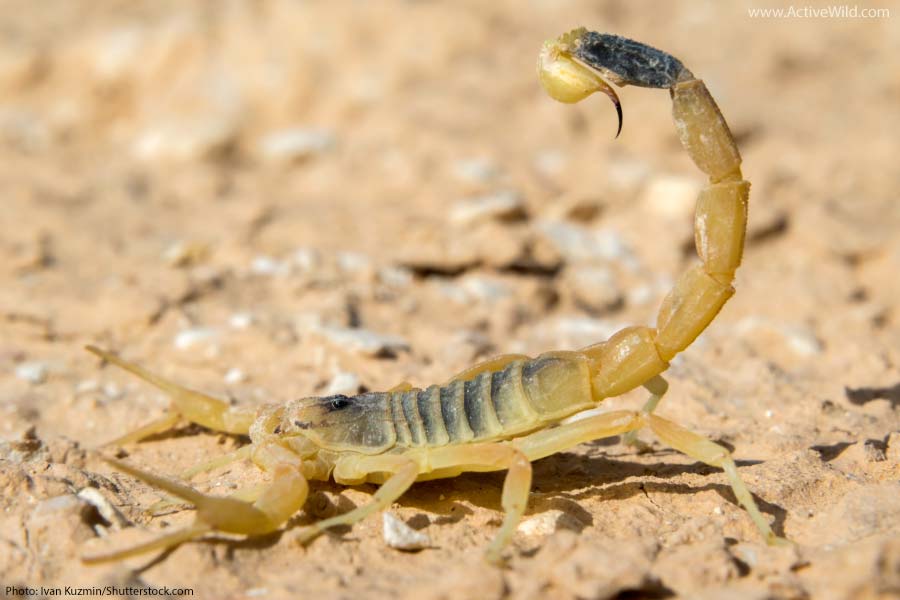
Scorpions are distinctive arachnids with pincers and tail in addition to their eight legs. At the end of the tail is a venomous stinger, which is used both to subdue prey and in self-defense against predators.
You can find out more about scorpions on this page: Scorpion Facts
Myriapods
Myriapoda is the group of arthropods that contains centipedes and millipedes. Myriapods have long, thin bodies comprised of numerous segments, and a single pair of antennae.
Centipede
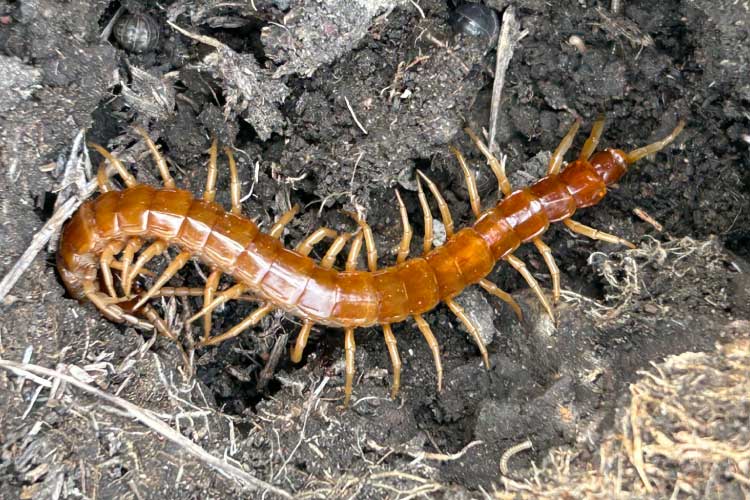
Centipedes are predatory invertebrates whose bite is venomous. Centipedes have a single pair of legs per body segment and move rapidly, unlike the slower-moving millipedes, which have two pairs of legs per body segment.
You can find out more about centipedes on this page: Centipede Facts
Mollusks
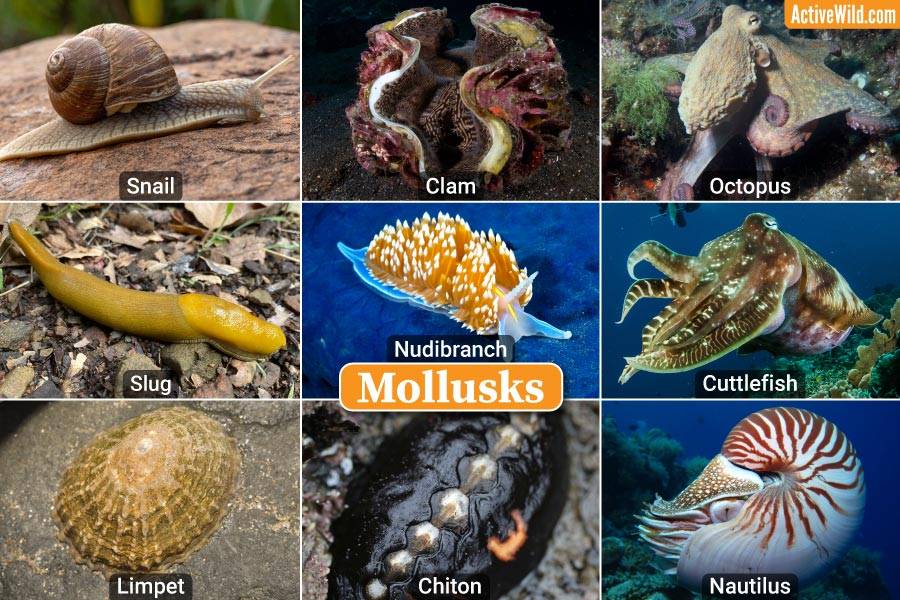
A mollusk is a member of the invertebrate phylum Mollusca. Mollusks are extremely diverse, ranging from bivalves – shelled animals such as clams and mussels, to cephalopods such as octopuses and squid, which are the most intelligent of all invertebrates. All mollusks have a nervous system and a body part called a mantle.
You can see more examples of mollusks on this page: Mollusks Examples
Clam
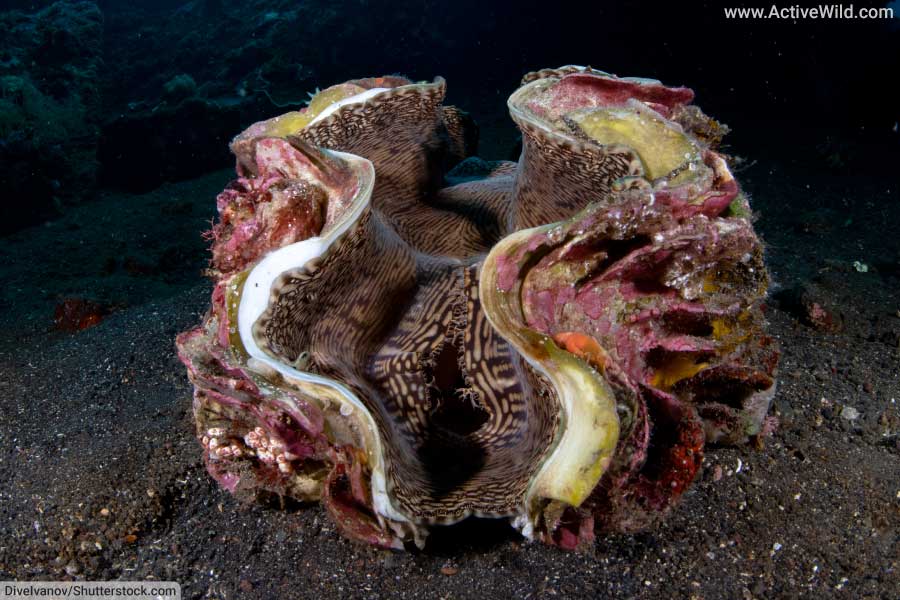
A clam is a bivalve – a member of the invertebrate class Bivalvia. Like all bivalves, clams have a hinged, two-part shell (each half is known as a “valve”) that can be open and closed.
Some clams can live over 500 years. Clams are found in both marine and freshwater habitats, and are food not just for animals such as walruses and octopuses, but also for humans.
Slug
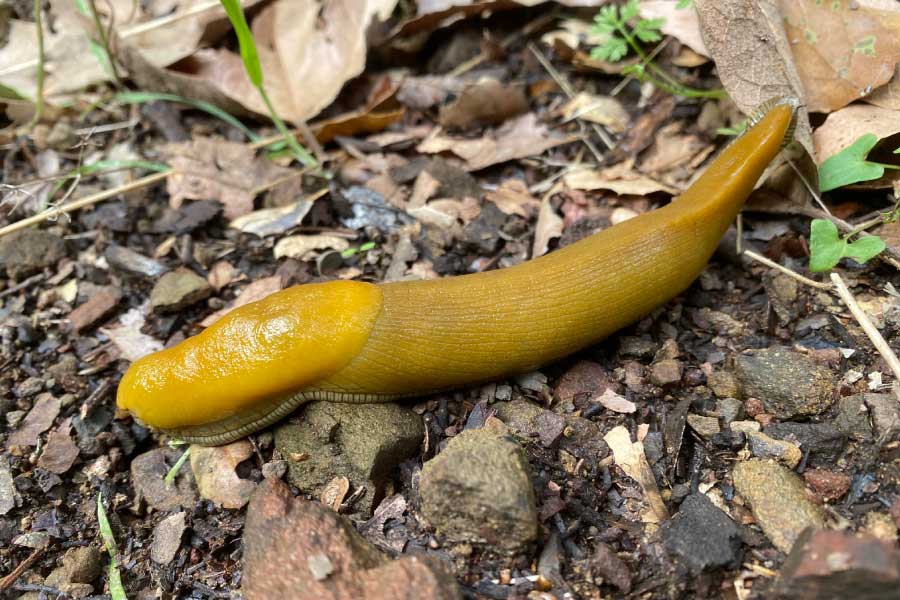
Slugs and snails make up the mollusk class Gastropoda. A gastropod moves by secreting a layer of mucous from the underside of its foot, over which it slides by contracting the muscles of the foot.
Gastropoda is home to more species than any other mollusk class. Slugs are gastropods that either lack a shell, or whose shell is small or internal.
Snail
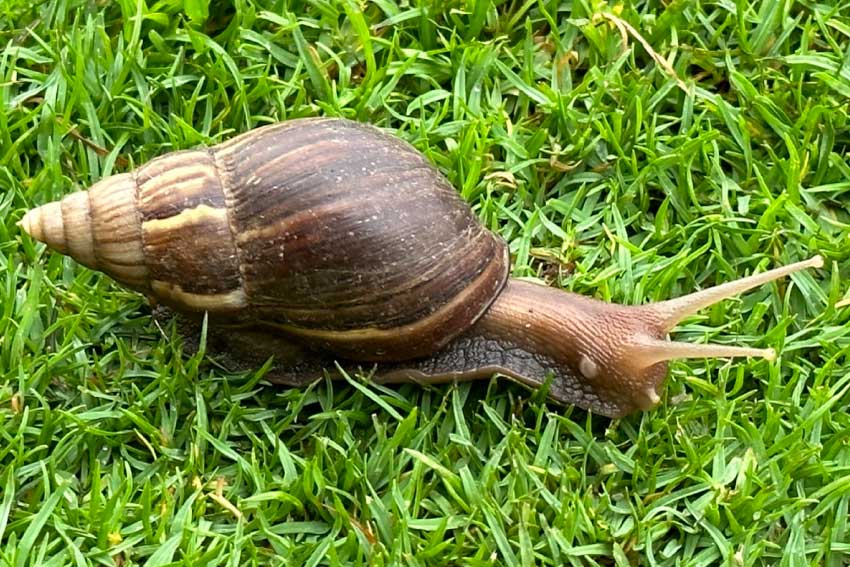
A snail is a gastropod mollusk with a shell, into which the animal can retreat for protection.
Snails are found in both terrestrial and aquatic environments (freshwater and marine). There are many more species of marine snails than there are land snails.
Octopus
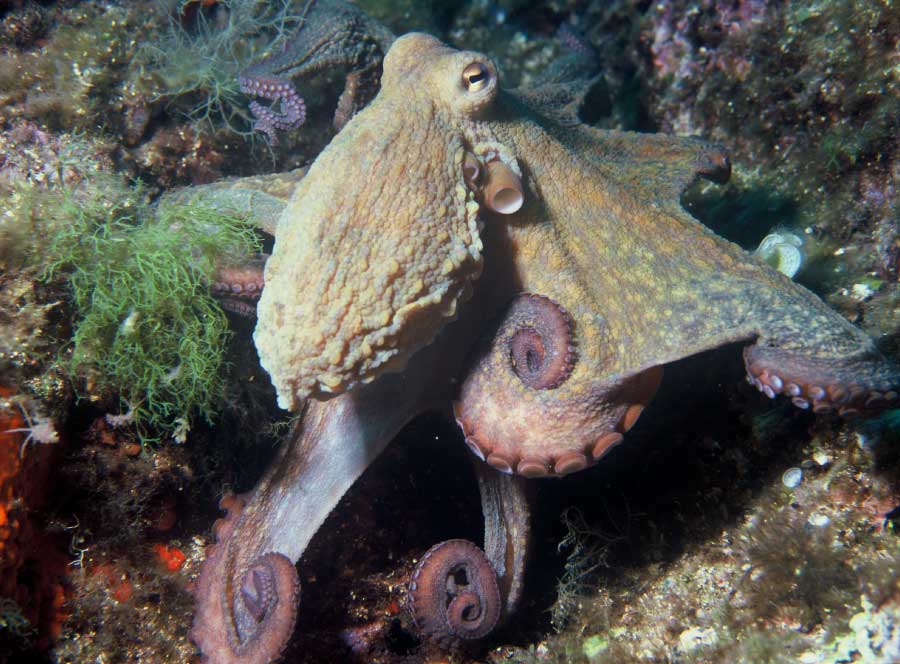
An octopus is an eight-legged marine mollusk with a soft body and a hard beak. Octopuses usually move by crawling or slowly swimming over the sea bed, but when they need to go faster, they use jet propulsion – contracting the mantle and projecting a stream of water from an opening called a siphon.
You can find out more about octopuses on this page: Octopus Facts
Squid
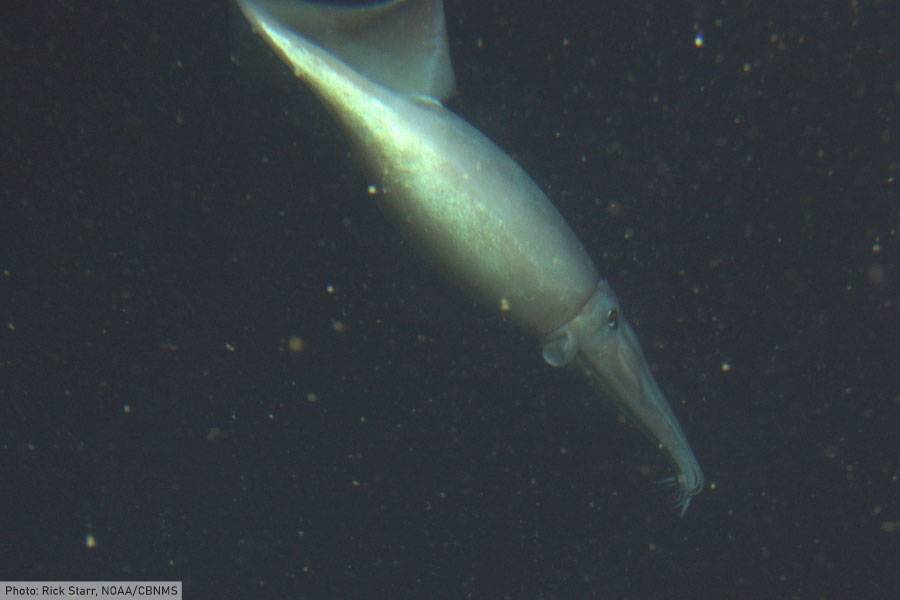
A squid is a predatory molluscan invertebrate that, along with octopuses, cuttlefishes and nautiluses, belongs to the class Cephalopoda.
Squid have eight legs and a pair of tentacles, with which they grab their prey. Squid hunt by sight, and use jet propulsion to move through the water.
Like other cephalopods, squid are able to change the color of their bodies almost instantly.
Echinoderms
Echinoderms are invertebrates in the phylum Echinodermata. Currently, 11,580 species of echinoderm are recognized. (source)
Sea Urchin
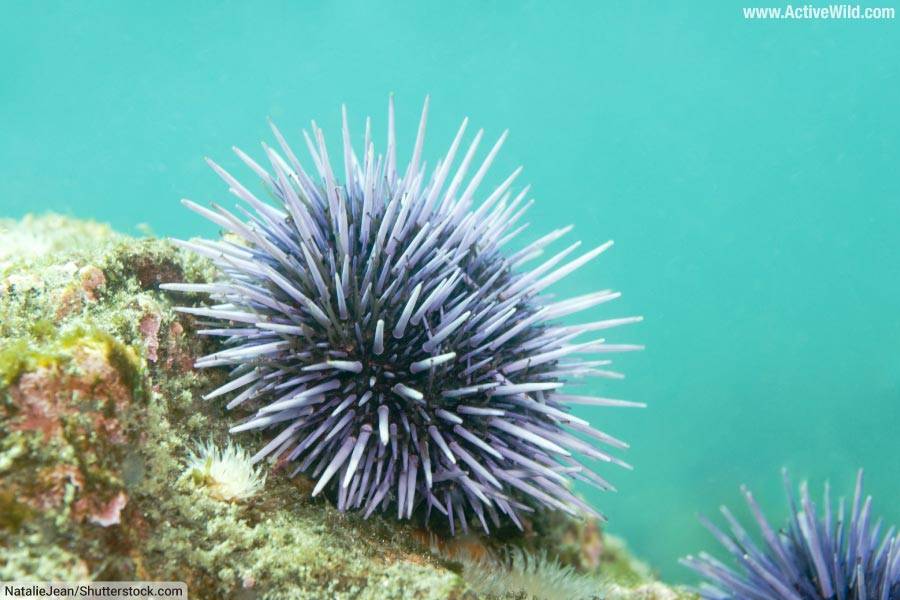
Sea urchins are a group of echinoderms with spherical, spined bodies. Found in oceans worldwide, sea urchins move by crawling over the substrate using numerous “tube feet”.
Like other echinoderms, the sea urchin has a “water-vascular system” consisting of a series of water-filed canals within its body. It moves by building up pressure within these canals, which are connected to its tube feet.
Sea Star / Starfish

Sea stars, also known as starfish, are echinoderms whose legs are arranged around a central disc. Most sea stars have five legs, but some species have more.
If a sea star loses one or more of its legs it can regenerate new limbs to replace those lost. Even more amazingly, in some species, an entire new sea star can grow from a single detached limb.
Sea Cucumber
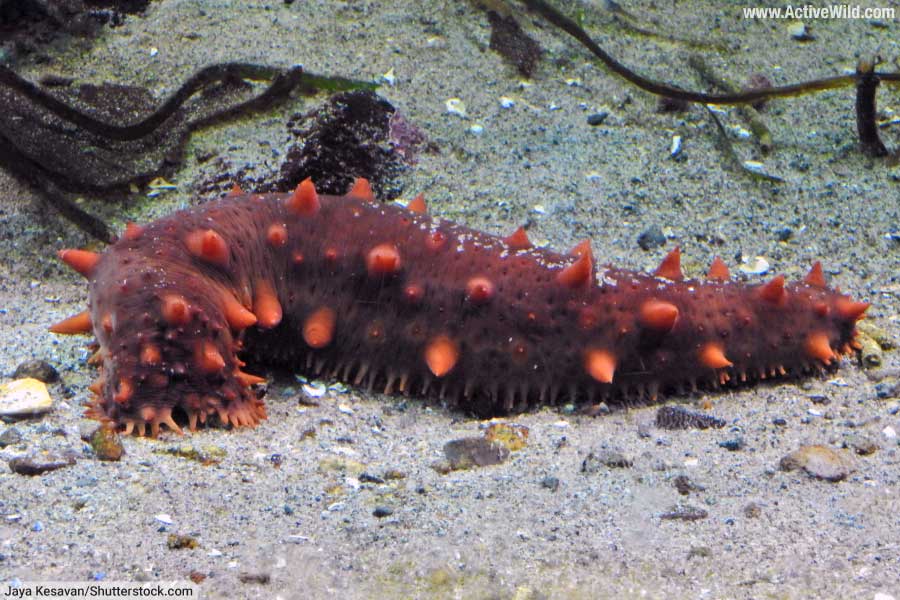
Named for their resemblance to the bulbous fruit of a cucumber plant, sea cucumbers are a group of echinoderms found on the sea bed of oceans worldwide. The mouths of sea cucumbers are surrounded by tentacles with which they collect food. Most sea cucumbers are scavengers.
Cnidaria
Cnidarians (pronounced nigh-dairy-ans) are a group of soft-bodied invertebrates with two main body forms: medusa and polyp.
In their medusa form, cnidarians are free-swimming, with umbrella-shaped bodies (known as “bells”) and a “tail” of tentacles. In their polyp form, cnidarians are sessile (attached to a surface), with cylindrical bodies and a mouth surrounded by tentacles.
Sea anemones and corals are examples of cnidarians that only have a polyp form. Jellyfish typically have both a medusa stage and a polyp stage in their life-cycles.
Coral
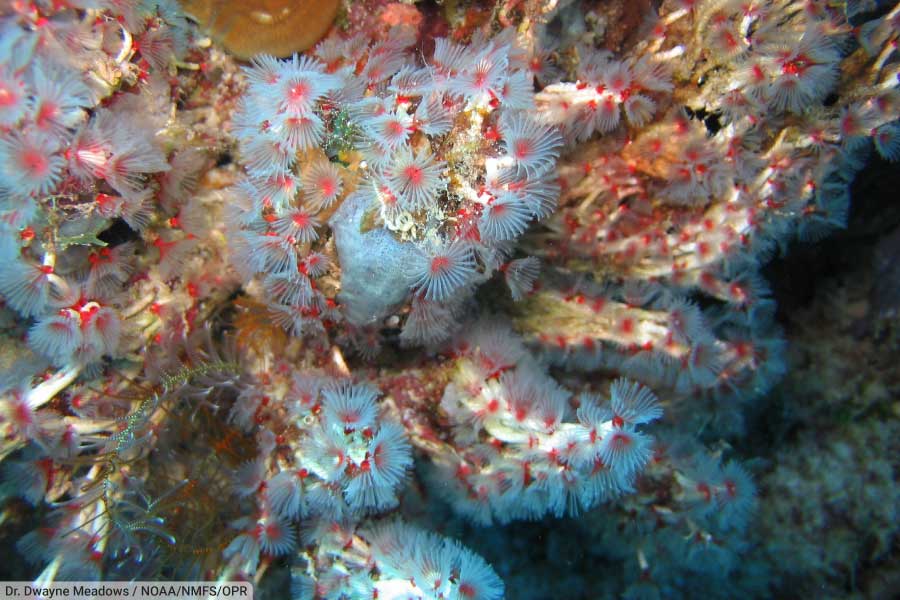
Corals live in colonies consisting of a large number of genetically identical polyps. Each coral secretes a hard exoskeleton. Over time, the colony’s exoskeletons accumulate, forming coral reefs.
Coral reefs are an important habitat for many forms of marine life, and are known as the “rainforests of the sea”.
Jellyfish
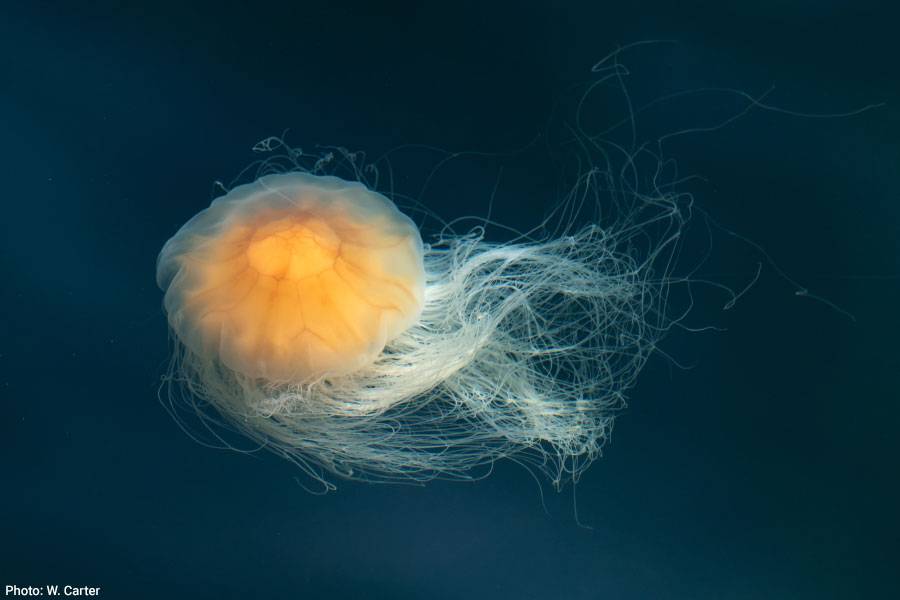
Individuals of the same jellyfish species may either be medusae or polyps.
As medusae, jellyfish are free-swimming, pushing themselves through the water with regular contractions of their umbrella-shaped bodies, known as “bells”.
The tentacles that trail behind the bell are equipped with stinging cells that are used both to capture prey and as defense against predators.
Being stung by a jellyfish can be extremely painful (and in rare cases, deadly).
As polyps, jellyfish have tubular bodies and are typically attached to a surface. Infant jellyfish grow at the top of the polyp and detach from the parent – a process known as “budding”.
Portuguese Man o’ War
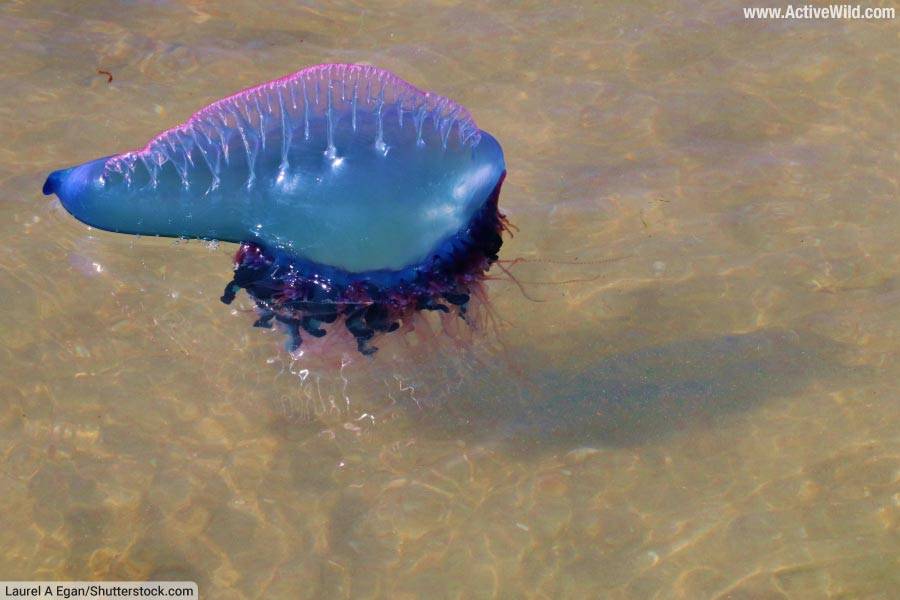
Despite resembling jellyfish, Portuguese man o’ war are fundamentally different from their cnidarian cousins, due mainly to the fact that a single Portuguese man o’ war is not actually a single organism – instead, it is a colony of organisms, each of which is known as a zooid. An individual zooid is attached to the colony and unable to live on its own.
A single Portuguese man o’ war consists of several different types of zooid, each of which performs a specific task, e.g., digestion, reproduction and prey capture.
Annelids
Annelids, or segmented worms, are invertebrates in the phylum Annelida. The body of a typical annelid consists of a series of segments, each of which contains the same organs. The segments cannot function individually, however, as they share a digestive and nervous system.
Earthworm
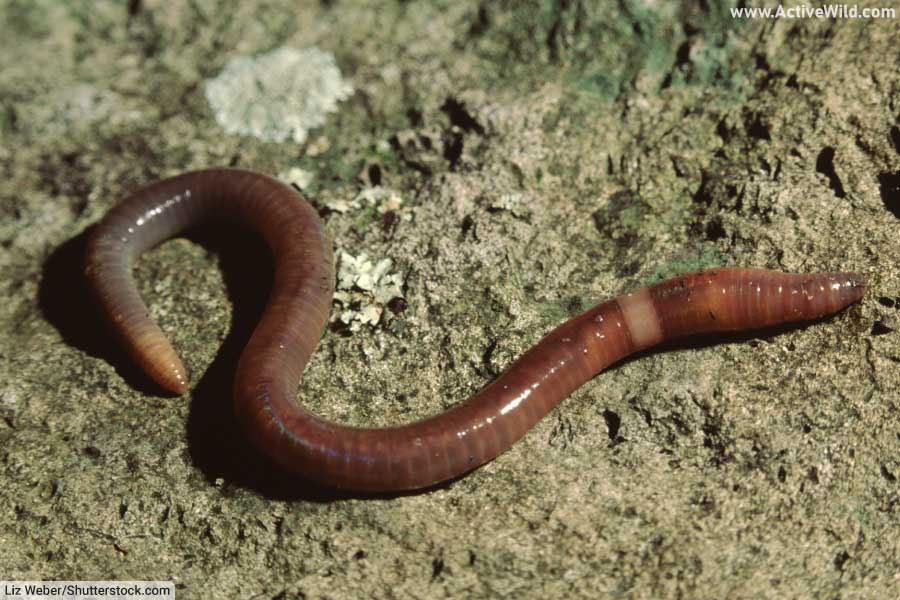
Earthworms are long, tubular invertebrates belonging to the order Opisthopora. The 6,000-plus species of earthworms are distributed on all continents except Antarctica.
Earthworms obtain food, which consists of a variety of plant and animal material, from the soil in which they live. An earthworm’s diet includes other invertebrate animals such as nematodes (roundworms) and rotifers.
An earthworm moves by expanding and contracting its body, with hairs known as “setae” acting as anchors in the soil.
Earthworms lack both lungs (they “breathe” through their skin) and eyes (they have light-sensing cells in their skin).
Leech
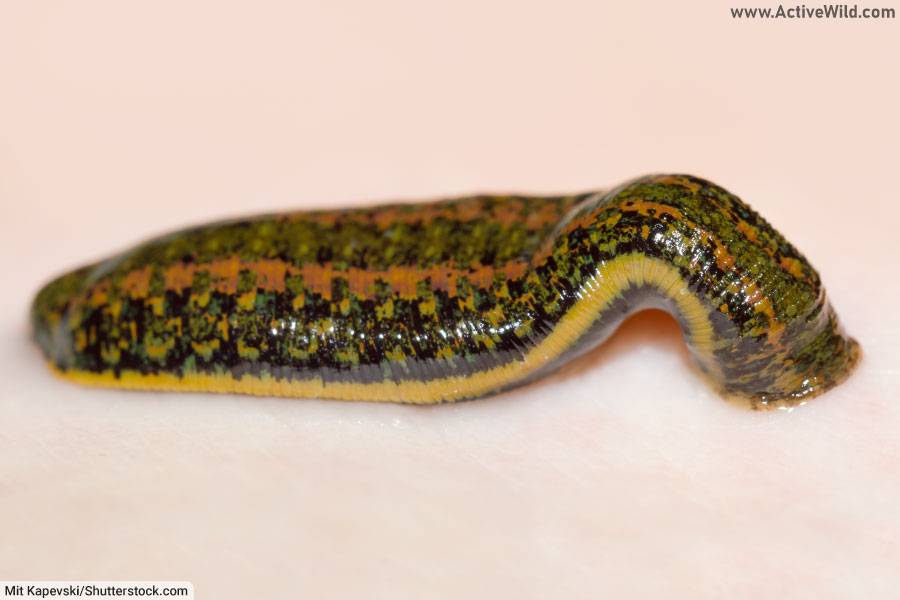
Leeches are annelids in the subclass Hirudinea. They are related to earthworms, and can be differentiated from these by the presence of a sucker at both ends of their bodies. Leeches use both suckers when moving, and some leech species are also able to swim.
Most leeches are parasitic, using their specially-adapted mouthparts to attach themselves to other animals (including humans) in order to drink their blood. The mouths of blood-sucking leeches contain hundreds of tiny, sharp teeth.
In the past, leeches were used to treat various ailments; it was believed that having blood drained by a leech would help restore the body’s natural balance.
Other Invertebrates
Sponge

There are 9,539 living sponge species (source). Together, they make up the phylum Porifera.
Sponges are relatively simple animals, lacking both a nervous system and a stomach. Most sponges are capable of movement only in their juvenile form.
The majority of sponges are found in marine habitats, although there are a small number of freshwater sponge species.
Sponges are filter feeders, feeding on microorganisms contained within the water that flows through their bodies.
Nematode
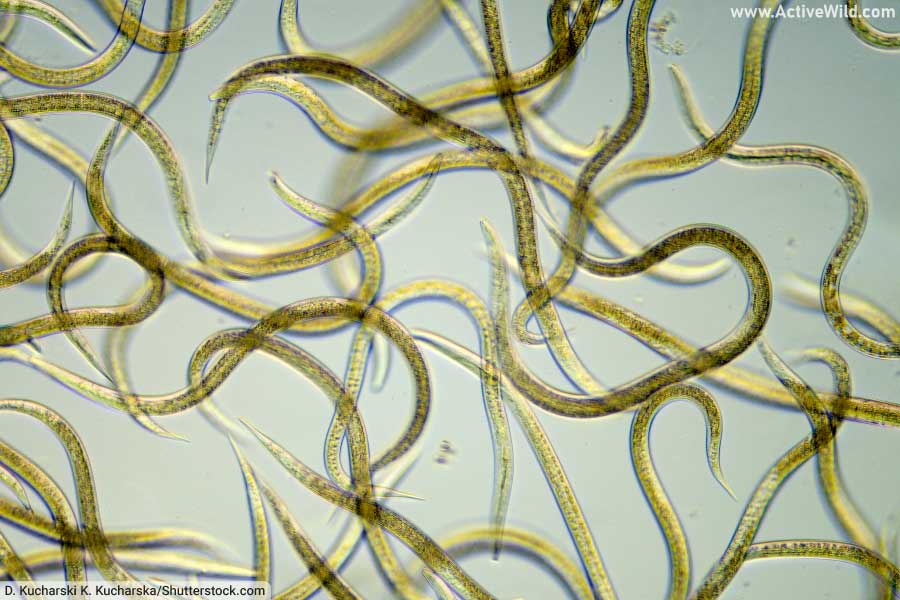
Nematodes, or roundworms, are a large group of mainly microscopic animals with wormlike bodies. They make up the phylum Nematoda.
Although most nematodes are microscopic, some can be very large: a species that lives inside the sperm whale can reach lengths of up to 13m (43 ft.). Many nematodes are parasites, living either on, or inside, other organisms.
Nematodes are found in virtually every habitat on Earth. There are more nematodes than any other type of animal; it is estimated that around 80% of all animals are nematodes.
Tardigrade
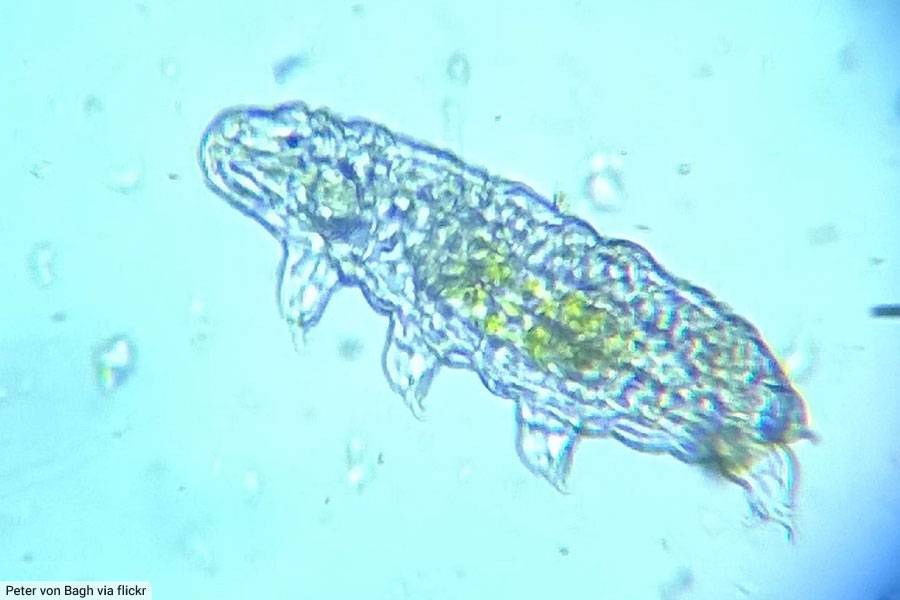
Tardigrades, or “water bears”, are microscopic invertebrate animals with eight legs. Tardigrades are known for their ability to withstand extreme conditions, and have been found on mountains, in deep sea habitats, and on Antarctica.
Rotifer
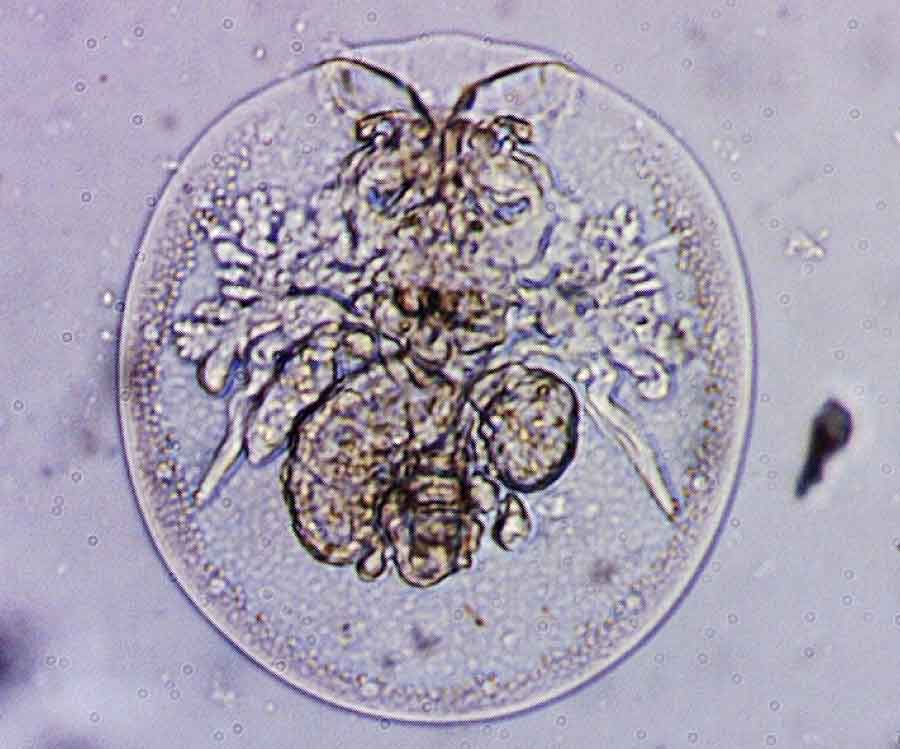
Rotifers are tiny aquatic invertebrates that make up the phylum Rotifera.
Most rotifers are between 0.2 and 0.5 mm in length. Despite their small size, rotifers have brains, a nervous system and a digestive system.
Sea Squirt
(No image available)
Sea squirts are marine animals with long, water-filled bodies. The largest sea squirts reach lengths of around 10 cm / 3.94 in. Sea squirts feed by capturing particles of food contained in water that is drawn in and expelled from separate openings in the body.
Lancelet
(No image available)
A lancelet is a small, fish-like animal of order Amphioxiformes. Lancelets are found in the sandy beds of shallow tropical and temperate waters worldwide. They are filter feeders, capturing plankton from the seawater drawn in through gill-like openings.
Lancelets are considered invertebrates because they lack a vertebral column. However, they do possess a notochord – a stiff, flexible rod that runs the length of the animal’s body.
The presence of a notochord makes lancelets members of the phylum Chordata – the same branch of animals as vertebrates (animals such as fish, reptiles, amphibians and mammals).
Biologists are interested in lancelets because the first vertebrates (which were fish) may have evolved from animals similar to lancelets.
Discover More With Active Wild
You can find more examples of invertebrates on these pages:
- Mollusks Examples, Pictures & Facts, Different Types Of Mollusks
- Arthropods Examples: Examples Of Arthropods From Around The World
Find out more about invertebrates on the following pages:
- Insects: The Ultimate Guide. Pictures, Facts, In-Depth Information – Discover The Amazing World Of Insects!
- Arachnids: The Ultimate Guide – What Is An Arachnid? The Different Types Of Arachnid, With Pictures & Facts
Discover Other Types Of Animals
Become an animal expert and discover the kingdom Animalia!
The post Invertebrates Examples With Pictures & Interesting Facts appeared first on Active Wild.